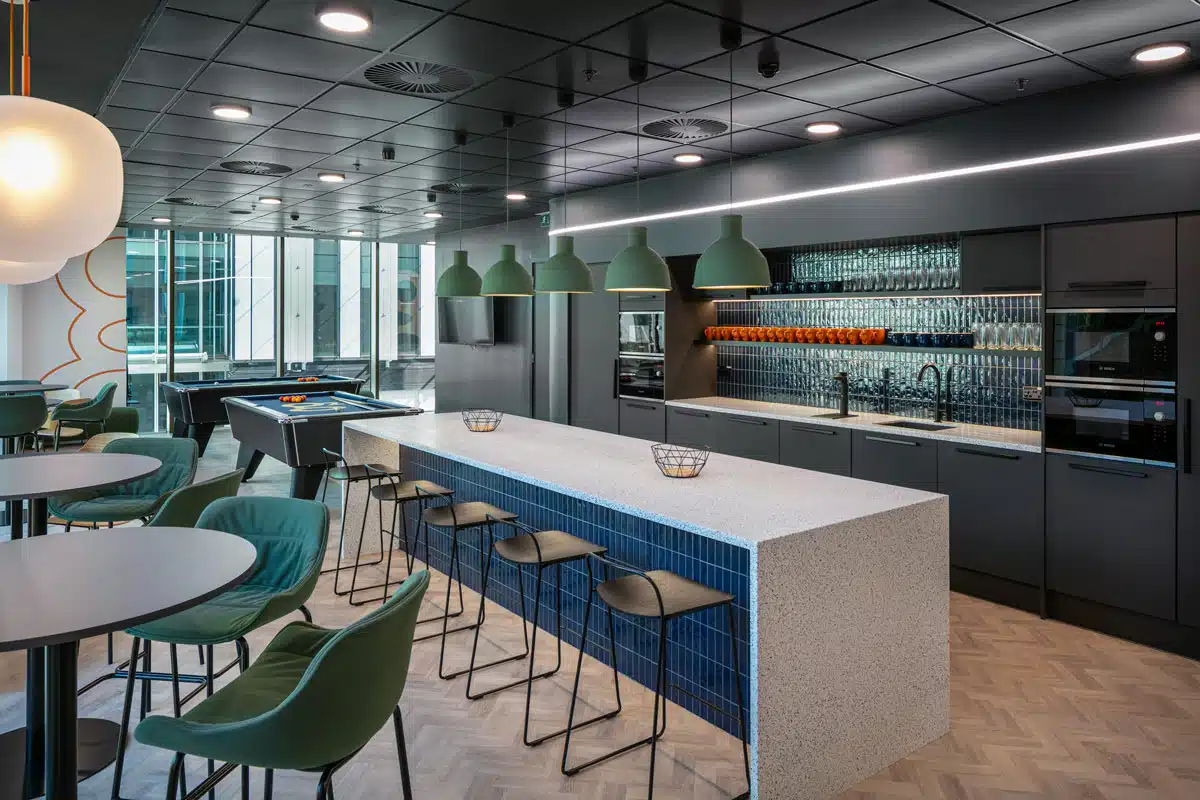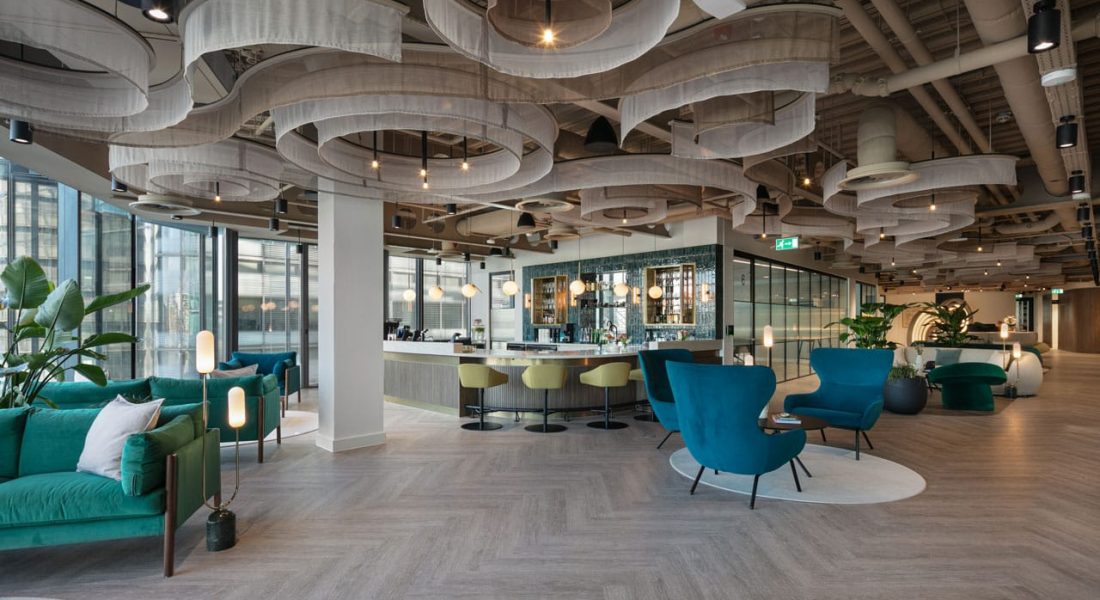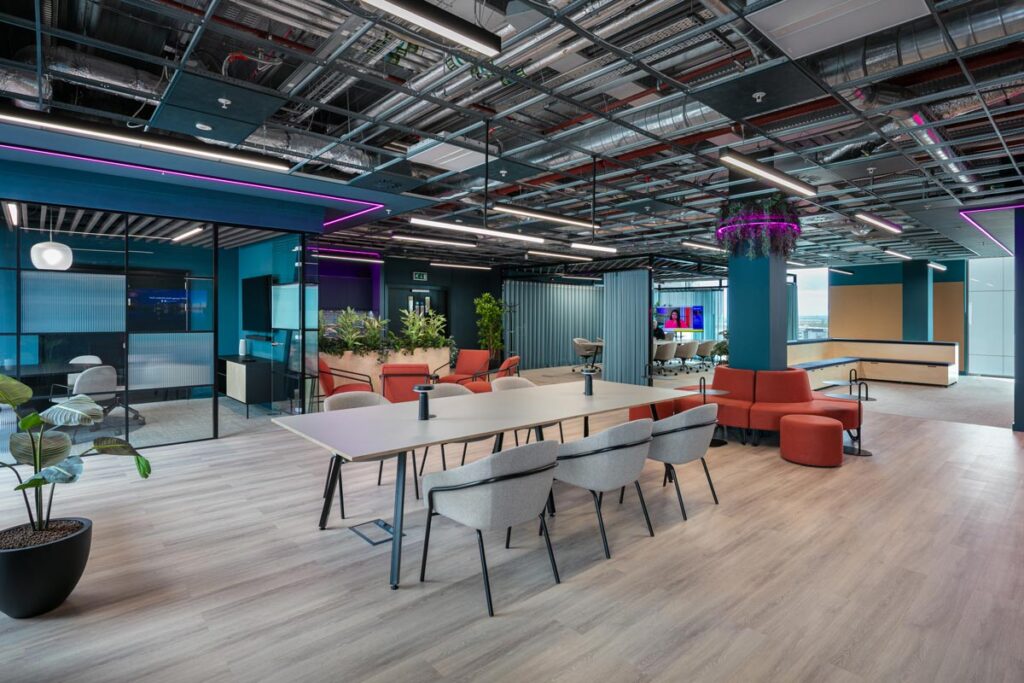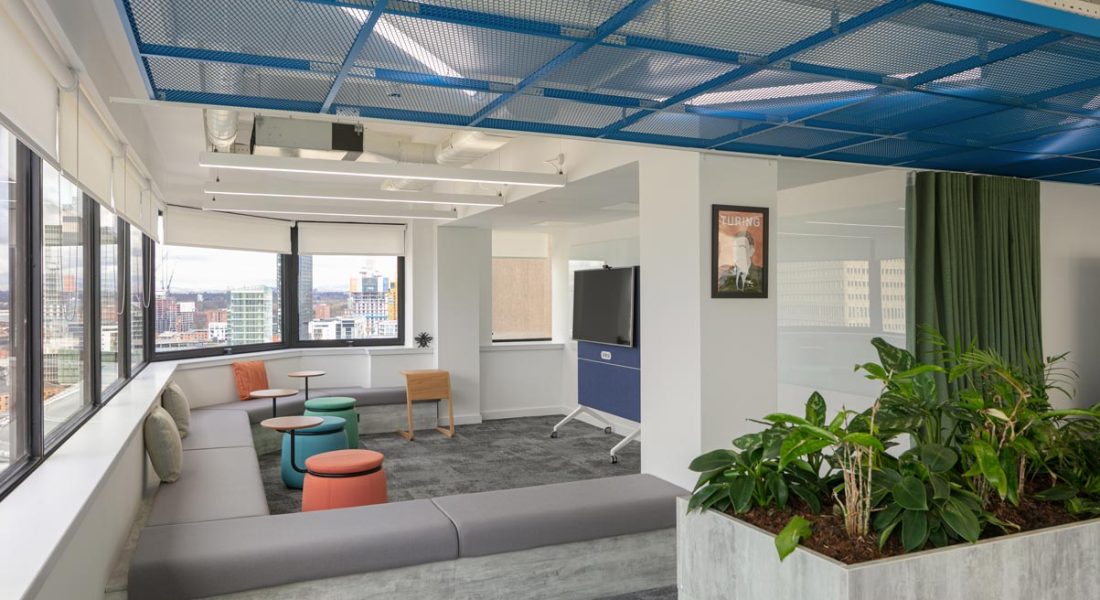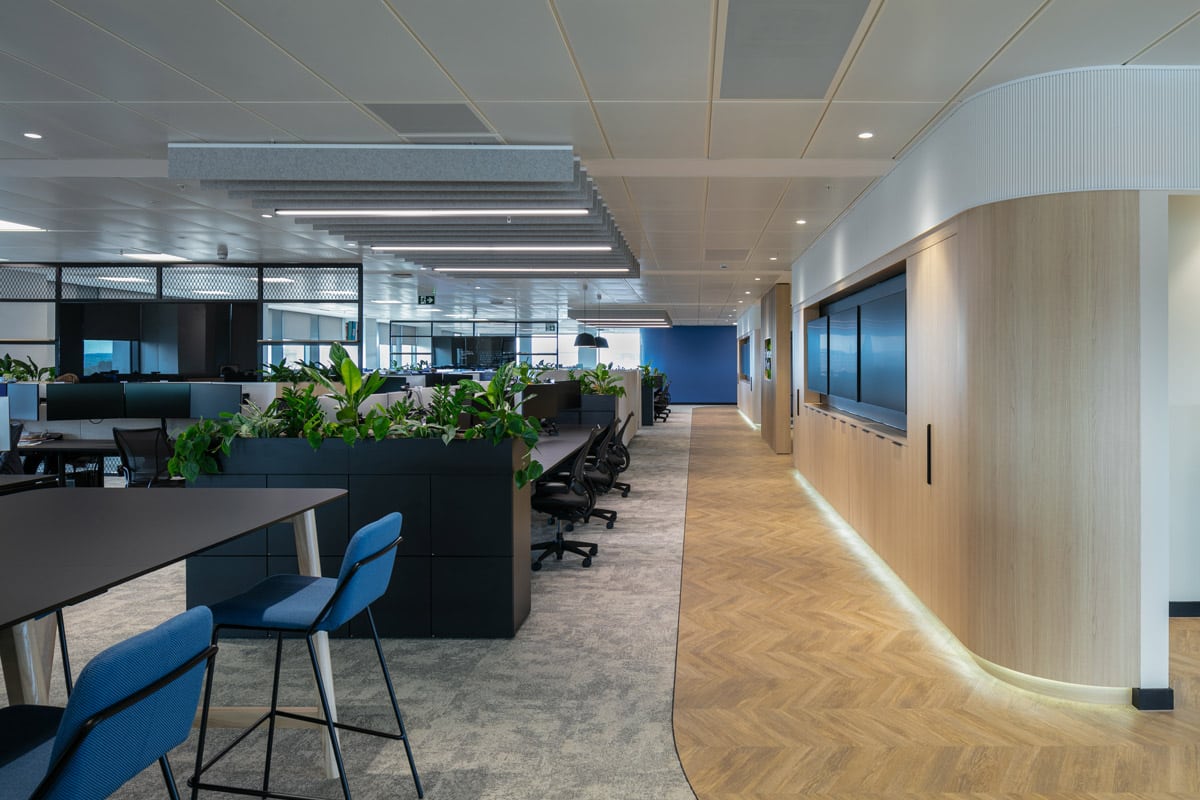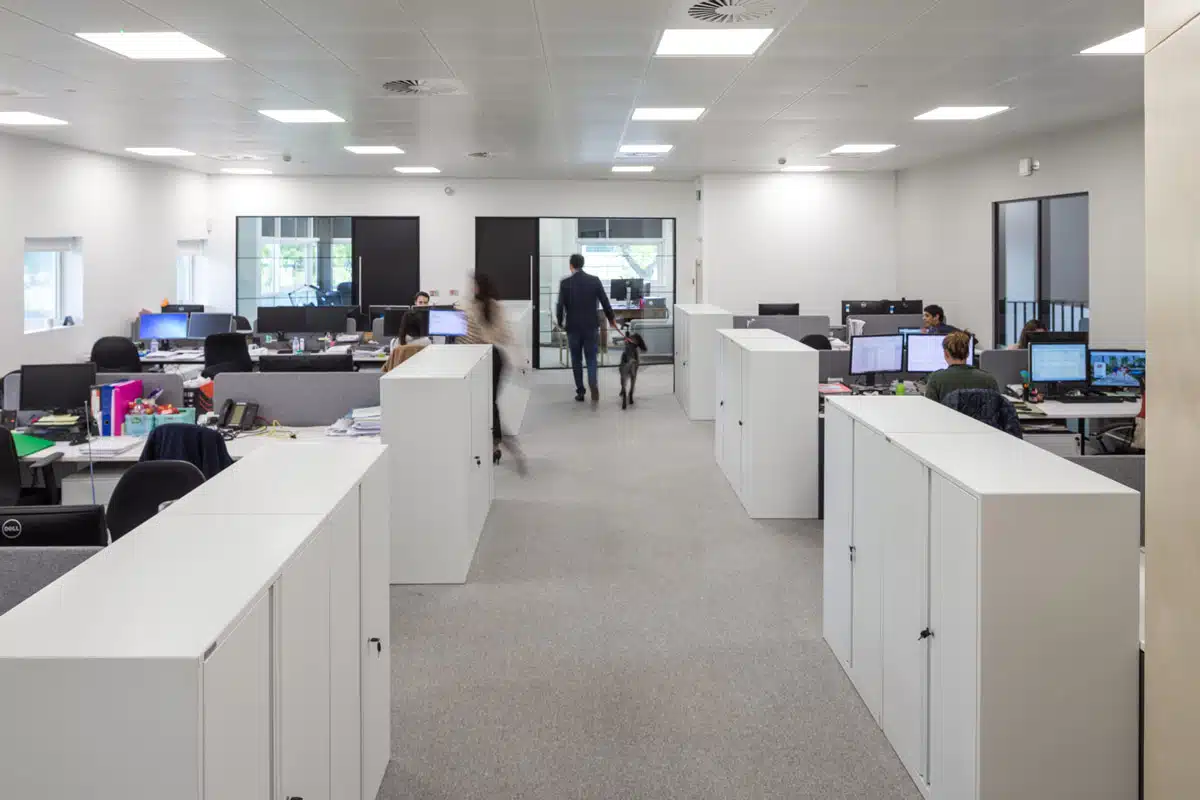Creating a collaborative workspace is no longer about adding a few shared desks or building another meeting room. Modern teams need environments that encourage communication, support creativity, and adapt to the way people work. Many businesses now recognise that collaboration happens in many forms, and each one requires thoughtful design. At ADT Workplace, we combine workplace consultancy with fit-out expertise to help clients build workspaces that truly support how teams interact.
A successful collaborative workspace must balance productivity, flexibility, and real user needs. It should bring people together without adding noise or distraction. It should help employees connect while still offering privacy when needed. When planned well, the right environment can strengthen culture, improve performance, and support long-term business goals.
Understanding How Your Teams Collaborate
The first step in designing a collaborative workspace is understanding how teams actually work. Many companies assume collaboration means large meetings or group workshops. In reality, most collaboration takes place in shorter, informal sessions. Teams often gather for quick conversations, focus on shared tasks, or work together at different times of the day.
Workplace consultancy helps uncover the truth about how collaboration happens. User interviews, observation studies, and occupancy data all provide valuable insight. These findings help shape spaces that support real behaviour rather than trends. As a result, businesses avoid unnecessary features that add cost without improving teamwork.
Creating Zones That Support Different Types of Collaboration
A strong collaborative workspace offers a variety of settings. Each one supports a different type of teamwork or communication style. This helps employees choose the right environment for the task at hand.
Informal collaboration zones work well for quick chats and updates. These areas often include soft seating, coffee points, or relaxed touchdown spots. They help teams solve issues quickly and encourage spontaneous interaction.
Structured collaboration zones support workshops, brainstorming sessions, and planned meetings. These rooms benefit from writable walls, flexible furniture, and integrated technology. They help teams share ideas, review work, and make decisions with ease.
Hybrid collaboration zones are becoming increasingly important. Many meetings now include both in-person and remote attendees. Spaces need reliable screens, microphones, and acoustics that help everyone participate fully. Successful hybrid setups create equal experiences for everyone involved.
Balancing Openness with Acoustic Control
Open collaboration areas can support energy and movement, yet they often create issues when noise spreads across the office. Good design ensures the workspace remains productive even when teams are working together nearby.
Acoustic panels, textured materials, and strategic zoning all help control sound. Soft furnishings also reduce echo and keep conversations contained. These elements improve privacy and ensure work remains focused. They also create a comfortable environment that feels calm rather than chaotic.
ADT Workplace often uses detailed acoustic modelling to plan layouts. This approach ensures collaborative spaces support interaction without affecting nearby teams.
Flexible Furniture That Adapts to Changing Needs
Collaboration rarely happens in the same way each time. Teams may need open layouts, split group areas, or focused presentations. Furniture that moves and adapts helps support these changing needs.
Modular seating, mobile screens, and lightweight tables all encourage flexibility. Teams can shape their environment for a project and restore it within minutes. This approach also helps businesses avoid expensive future changes, as the space stays relevant for longer.
Many companies now prefer multi-purpose areas instead of fixed meeting rooms. These spaces support workshops, team updates, events, and informal work. This approach improves space efficiency and ensures every square metre delivers value.
Designing with Technology at the Centre
Technology plays a key role in supporting collaboration. It must work seamlessly and remain easy for every user. Poor technology increases frustration and reduces morale, which can limit collaboration rather than support it.
Clear screens, reliable connectivity, digital booking systems, and integrated AV equipment all support modern teamwork. Wireless sharing tools help teams present ideas quickly. Smart room booking systems also keep meeting spaces available and reduce scheduling issues.
At ADT Workplace, we work with clients to integrate technology into the design process from the start. This ensures spaces function smoothly and look clean and professional.
Supporting Culture and Connection
A collaborative workspace also strengthens culture. When teams connect more naturally, communication improves and relationships grow. Design elements such as shared social spaces, project zones, and communal hubs help employees feel part of a wider community.
Brand identity also plays a role. Visual cues, colour palettes, and material choices help reinforce company values. These touches make the workspace feel purposeful and aligned with the organisation.
Biophilic design further supports wellbeing. Natural materials, planting, and daylight improve comfort and create inviting spaces. These environments make collaboration feel enjoyable rather than forced.
Using Consultancy Insight to Guide Design
The most successful collaborative workspaces start with data. Consultancy helps reveal how teams work, how they communicate, and which barriers exist. These insights guide layout decisions, zone types, technology choices, and environmental design.
This approach ensures that every design choice supports a clear need. It also ensures the final fit-out remains aligned with long-term business goals. ADT Workplace uses insights gathered through workshops, engagement sessions, and data analysis to shape better workplaces that genuinely help people collaborate.
Bringing Collaborative Spaces to Life
When consultancy, workplace strategy, and fit-out delivery work together, businesses gain a workspace that genuinely supports collaboration. Every detail, from furniture selection to acoustic layout, contributes to a more productive team environment.
A well-designed collaborative workspace helps teams share knowledge, solve problems, and drive performance. It remains flexible, future-proof, and enjoyable to use. It also strengthens company culture and attracts new talent.
If you are planning to redesign your workspace or explore new ways to support teamwork, ADT Workplace can guide you through the full process. Our team blends insight, design, and fit-out expertise to create spaces that help people do their best work.

